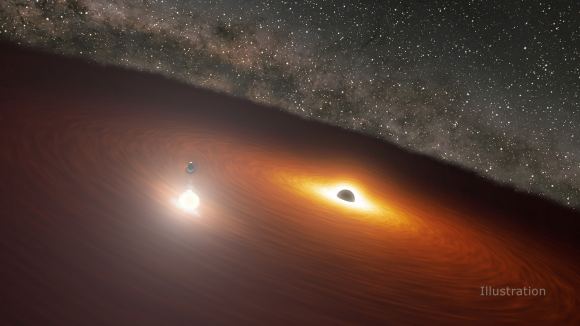Science
Related: About this forumSupermassive Black Hole Orbits an Even More Massive Black Hole, Crashing Through its Accretion Disk
MAY 2, 2020 BY MATT WILLIAMS

POSTED ON MAY 2, 2020
Supermassive Black Hole Orbits an Even More Massive Black Hole, Crashing Through its Accretion Disk Every 12 Years
NASA’s Spitzer Space Telescope may be retired, but the things it witnessed during its sixteen and a half year mission will be the subject of study for many years to come. For instance, Spitzer is the only telescope to witness something truly astounding occurring at the center of the distant galaxy OJ 287: a supermassive black hole (SMBH) orbited by another black hole that regularly passes through its accretion disk.
Whenever this happens, it causes a flash that is brighter than all the stars in the Milky Way combined. Using Spitzer‘s observations, an international team of astronomers was able to finally create a model that accurately predicts the timing of these flashes and the orbit of the smaller black hole. In addition to demonstrating General Relativity in action, their findings also provide validation to Stephen Hawking‘s “no-hair theorem.”
Located 3.5 billion light-years from Earth, OJ 287 is what is known as a “blazar,” a galaxy with a particularly active nucleus and a jet of high-energy particles extending from its center. At its center is an SMBH that is roughly 18 billion times as massive as our Sun, making it the largest ever discovered – whereas the black hole at the center of the Milky Way (Sagittarius A*) is about 4 million Solar masses.
For decades, astronomers have been aware of the binary nature of this black hole and determined that its companion – which is 150 million times as massive as our Sun – completes an orbit once every 12 years. Twice in its orbit, the smaller black hole crashes through the massive disk of gas and dust surrounding its larger companion. These collisions create expanding bubbles of hot gas that move away from the disk and are extremely bright.
More:
https://www.universetoday.com/145935/supermassive-black-hole-orbits-an-even-more-massive-black-hole-crashing-through-its-accretion-disk-every-12-years/#more-145935
love_katz
(2,578 posts)Thank you! I live for these. I wanted to be a scientist when I was in high school. I wish I had stayed in college instead of moving out and getting an apartment. Sigh. When I read your posts, I can feel a tiny ray of hope for the human race. ![]()
targetpractice
(4,919 posts)So fantastically curated! Thanks, Judi Lynn!